Essential Steps to Successfully Drill Out a Tubular Lock

Drilling out a tubular lock can be a challenging task, but with the right steps, it can be done successfully. Whether you’re a locksmith or just someone who needs to gain access to a locked item, drilling out a tubular lock can be a last resort when all other methods fail. However, it’s important to note that drilling out a lock should only be done as a last resort, and it should be done carefully to avoid damaging the lock or the item it is attached to. In this article, we will outline the essential steps to successfully drill out a tubular lock.
Step 1: Choose the right tools
Before you start drilling, it’s important to choose the right tools. You will need a power drill with a drill bit that is appropriate for the size of the lock. It’s also a good idea to have spare drill bits on hand in case one breaks during the process. Additionally, you will need a pair of safety goggles to protect your eyes from any debris that may be generated during the drilling process.
Step 2: Mark the center of the lock
Once you have your tools ready, the next step is to mark the center of the lock. This can be done by using a center punch or by making a small indentation with a sharp object. By marking the center, you will have a reference point for drilling.
Step 3: Drill slowly and steadily
Now it’s time to start drilling. It’s important to start with a slow speed and apply steady pressure to avoid overheating the drill bit or damaging the lock. Begin drilling at the center mark and gradually increase the speed as you penetrate the lock. It’s important to be patient and take breaks if necessary to prevent overheating.
Understanding the Basics of Tubular Locks
A tubular lock is a type of lock that is commonly found in various applications such as safes, vending machines, and some residential and commercial doors. It is named after the cylindrical shape of its keyway, which consists of several small pins or detainers that align with corresponding cuts in the key.
Key Components of a Tubular Lock
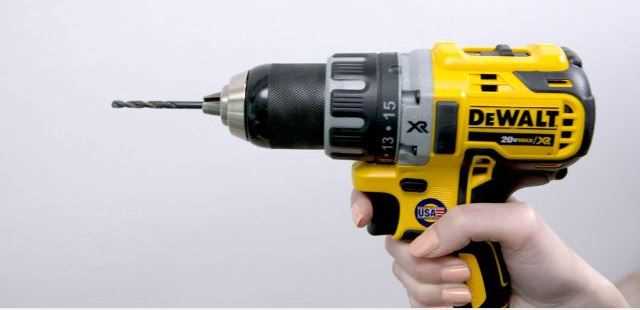
- Cylinder: The cylindrical body of the lock that houses the various internal components.
- Keyway: The narrow opening in which the key is inserted to operate the lock.
- Pins or Detainers: The small, cylindrical components that align with the cuts in the key and prevent the lock from turning without the proper key.
- Spring: The component that pushes the pins or detainers downward when there is no key inserted.
- Driver Pins: The pins or detainers that rest between the plug (the rotating part of the lock) and the housing, preventing the plug from rotating when the pins or detainers are not aligned.
- Shear Line: The imaginary line that separates the plug from the housing when the pins or detainers are aligned with the cuts in the key.
How Tubular Locks Work
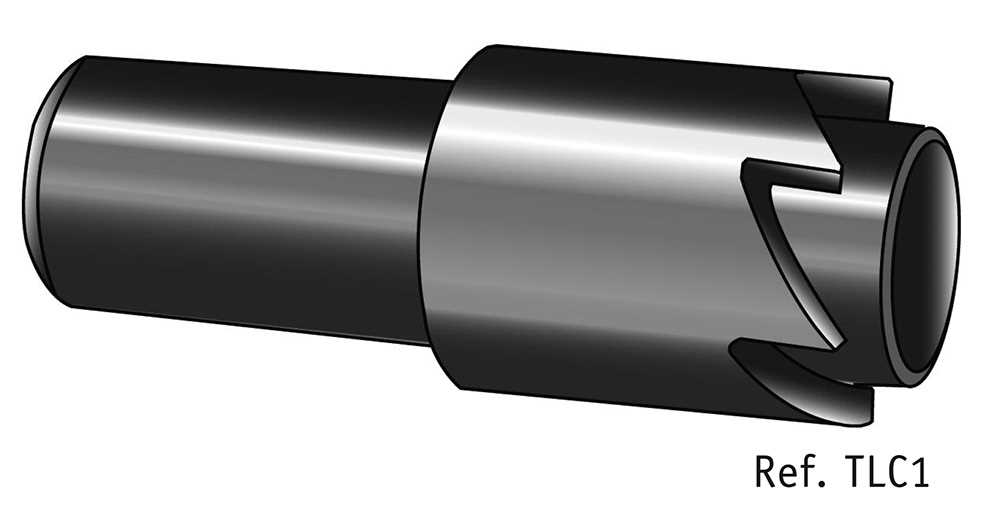
When a key is inserted into a tubular lock’s keyway, the pins or detainers align with the cuts in the key, creating a gap at the shear line. This allows the plug to rotate, unlocking the lock. Without the key, the pins or detainers obstruct the rotation of the plug, preventing unauthorized access.
Tubular Lock Picking
Tubular lock picking involves manipulating the pins or detainers to align with the cuts in the key without using the actual key. Specialized lock picking tools, such as tubular lock picks or decode keys, can be used to accomplish this task.
Advantages and Disadvantages
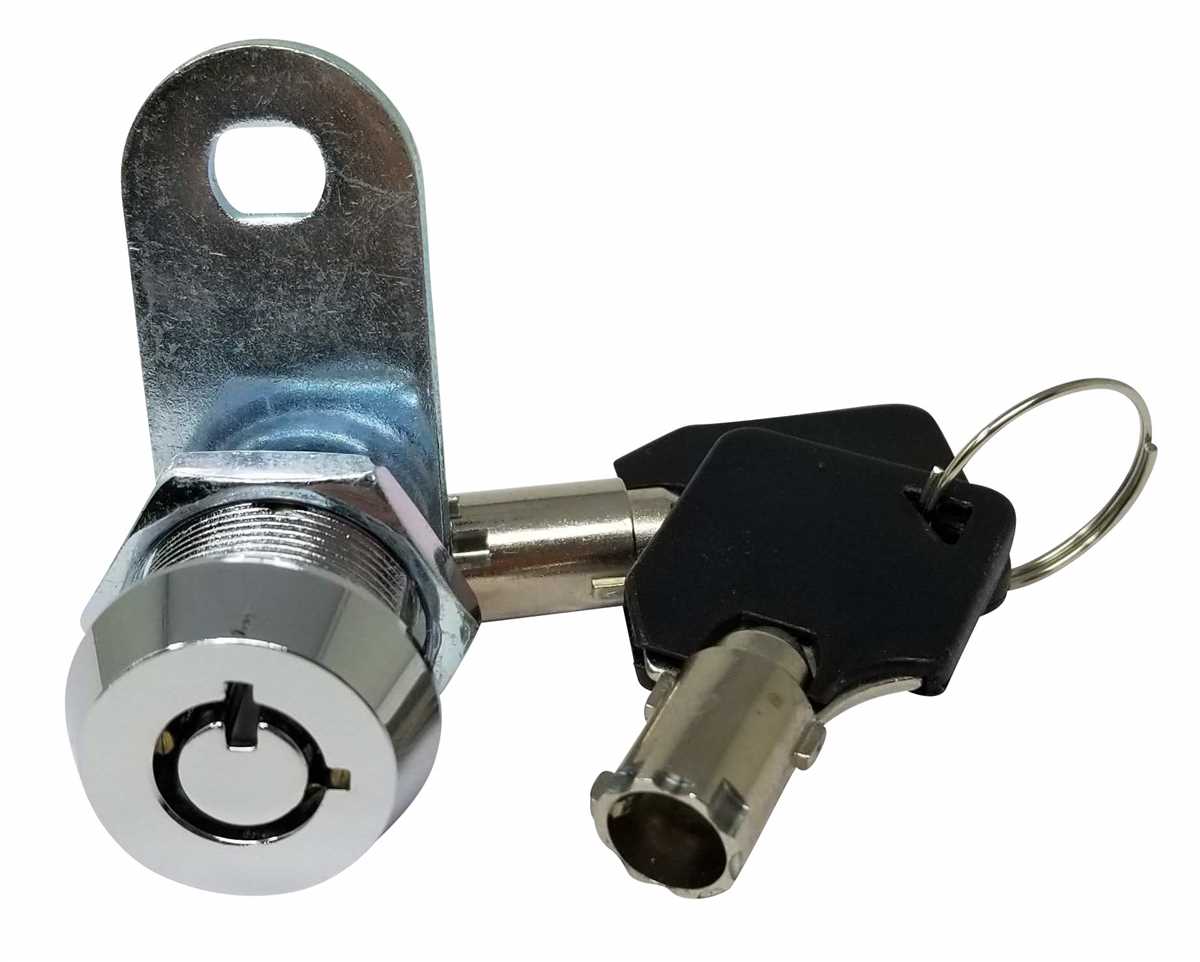
Tubular locks offer a higher level of security compared to standard pin tumbler locks due to their design and multiple pins or detainers. However, they can be vulnerable to lock picking techniques, especially if the lock is of lower quality. Additionally, tubular lock picking requires specialized tools and knowledge, making it more challenging for unauthorized individuals to bypass the lock.
In Conclusion
Understanding the basics of tubular locks is crucial for locksmiths and individuals interested in lock picking. By knowing the key components and how tubular locks work, it becomes clearer how to approach picking or bypassing these types of locks, as well as recognizing their advantages and disadvantages.
Preparing the Necessary Tools and Equipment
Before starting the process of drilling out a tubular lock, it is essential to gather all the necessary tools and equipment. This will ensure that you have everything you need to complete the task efficiently and effectively.
Tools
Here are some of the essential tools you will need:
- Drill: A high-quality drill is required to drill through the lock cylinder. Make sure to use a drill that is powerful enough to penetrate the tough metal.
- Drill Bits: It is recommended to have a set of drill bits, including various sizes. This will allow you to choose the appropriate bit based on the lock’s size and material.
- Vise-Grip Pliers: These pliers are useful for holding the lock in place while drilling. They provide a secure grip and prevent the lock from moving around during the drilling process.
- Screwdrivers: Flathead and Phillips screwdrivers may be necessary to remove any screws or fasteners that are holding the lock in place.
- Hammer: A hammer can be handy for tapping the drill bit lightly or for other tasks that may require some force.
- Lubricant: Applying lubricant to the lock cylinder can help to reduce friction and make drilling easier.
Equipment
In addition to the tools mentioned above, you may also need the following equipment:
- Safety Goggles: It is crucial to protect your eyes during the drilling process. Safety goggles will shield your eyes from any flying debris or metal particles.
- Gloves: Wearing gloves will not only provide protection but also improve your grip on the tools and equipment.
- Drop Cloth or Tarp: To avoid creating a mess, lay down a drop cloth or tarp to catch any metal shavings or other debris that may be generated during the drilling process.
- Lock Lubricant: After successfully drilling out the tubular lock, you may need to lubricate the new lock cylinder before installation. Having lock lubricant on hand will ensure smooth operation of the new lock.
By properly preparing the necessary tools and equipment, you will have a more organized and efficient drilling process. Taking the time to gather all the essential items beforehand will save you from interruptions and ensure a successful outcome.
Choosing the Right Technique for Drilling
When it comes to drilling out a tubular lock, there are several techniques that you can choose from. Each technique has its own advantages and limitations, so it’s important to understand the options available to you before deciding on the best approach for your situation.
1. Standard drilling
The most common technique used for drilling out a tubular lock is standard drilling. This involves drilling a small hole into the lock mechanism, usually using a drill bit or a drill press. Once the hole is made, you can access the internal components of the lock and manipulate them to open the lock.

Pros:
- Relatively simple and straightforward technique
- Requires minimal specialized tools
Cons:
- Drilling can damage the lock mechanism
- May require additional repairs or replacement of the lock
2. Rapid drilling
Rapid drilling is a more aggressive technique that involves drilling multiple holes in the lock cylinder in quick succession. This can create enough damage to the lock mechanism to allow for easy manipulation and opening of the lock.
Pros:
- Allows for quick and efficient opening of the lock
- Minimal damage to the lock mechanism
Cons:

- Requires a steady hand and precise control of the drill
- May require more advanced drilling equipment
3. Bypassing the lock
Another technique for opening a tubular lock is bypassing the lock mechanism entirely. This involves using specialized tools and techniques to manipulate the lock components without drilling or damaging the lock.
Pros:
- Does not require drilling or damaging the lock
- Can be a more discreet method of opening the lock
Cons:
- Requires specialized tools and knowledge
- May not be suitable for all types of tubular locks
4. Professional assistance
If you are not confident in your ability to drill out a tubular lock yourself, or if you are dealing with a high-security lock that requires specialized techniques, it may be best to seek professional assistance. Locksmiths and security professionals have the experience and tools necessary to safely and effectively open tubular locks.
Pros:
- Expertise and experience of a professional
- Potential for minimal damage to the lock and surrounding area
Cons:
- May be more expensive than DIY techniques
- Reliance on an external party for lock opening
Choosing the right technique for drilling out a tubular lock depends on your skill level, the type of lock you are dealing with, and the level of damage you are willing to risk. Consider your options carefully and proceed with caution to ensure a successful outcome.
Taking Safety Precautions
When drilling out a tubular lock, it is crucial to prioritize safety. This ensures the well-being of yourself, those around you, and the preservation of the property you are working on. Below are some essential safety precautions to take when performing this task:
- Wear Protective Gear: Before starting the drilling process, make sure to wear appropriate protective gear such as safety glasses, gloves, and a dust mask. These will help protect your eyes, hands, and respiratory system from any debris or potential hazards.
- Secure the Area: Clear the immediate area around the lock and ensure there are no obstacles or tripping hazards that could potentially cause accidents during the drilling process. It is also important to inform others in the vicinity to prevent any unintended accidents.
- Use Stable Work Surface: When drilling out a tubular lock, it is necessary to have a secure and stable work surface. This will prevent any sudden movements or slips that could result in injury or damage to the lock.
- Follow Proper Drilling Techniques: It is essential to use the appropriate drilling techniques and tools to prevent accidents. Use a steady pressure when drilling and avoid excessive force that could cause the drill bit to break or slip.
- Dispose of Debris Properly: As you drill out the lock, debris and metal shavings may accumulate. It is important to dispose of these materials properly to prevent any injuries or damage. Use a vacuum or a magnet to collect the metal shavings and dispose of them safely.
- Keep Fire Safety in Mind: When drilling out a lock, friction can cause heat to build up. As a safety precaution, keep a fire extinguisher nearby and be mindful of this potential fire hazard, especially if you are drilling near flammable objects or materials.
- Stay Informed and Seek Professional Help if Needed: If you are not experienced or confident in your abilities to drill out a tubular lock, it is always best to seek professional help. They have the expertise and specialized tools needed to complete the task safely and efficiently.
By following these safety precautions, you can minimize the risk of accidents, injuries, and damages while drilling out a tubular lock. Prioritizing safety ensures a smooth and successful process.
Setting Up the Work Area
Before you begin drilling out a tubular lock, it is important to properly set up your work area to ensure a smooth and successful process. Follow these essential steps to set up your work area:
- Gather the necessary tools: Before you start, make sure you have all the necessary tools on hand. This includes a power drill, drill bits of various sizes, lubricant, safety goggles, gloves, and a rag or paper towels for cleaning.
- Choose a well-lit and well-ventilated space: Find a work area that is well-lit and well-ventilated. Good lighting will help you see clearly, while proper ventilation will prevent any fumes or dust from affecting your breathing.
- Clear the area: Make sure the work area is clear of any clutter or debris that may obstruct your movements. This will reduce the risk of accidents and help you work efficiently.
- Protect the surrounding surfaces: Place a protective covering, such as a drop cloth or a piece of cardboard, under the lock to catch any metal shavings or dust that may fall during the drilling process.
- Ensure stability: It is important to secure the lock in place to prevent it from moving or sliding during drilling. You can use a vise or clamp to hold the lock firmly, or ask someone to assist you by holding the lock stable while you work.
- Prioritize safety: Always prioritize safety when setting up your work area. Wear safety goggles and gloves to protect your eyes and hands from any flying debris or sharp metal edges. Keep your work area tidy and organized to minimize the risk of accidents.
By following these steps, you can ensure that your work area is properly set up and ready for the drilling process. This will help you approach the task with confidence and improve your chances of successfully drilling out a tubular lock.
Performing the Drilling Process
Gather the Necessary Tools and Equipment
Before starting the drilling process, it is important to gather all the necessary tools and equipment. This ensures that you have everything you need to successfully drill out a tubular lock. The tools and equipment you will need include:
- Drill
- Drill bits
- Protective eyewear
- Gloves
Prepare the Work Area
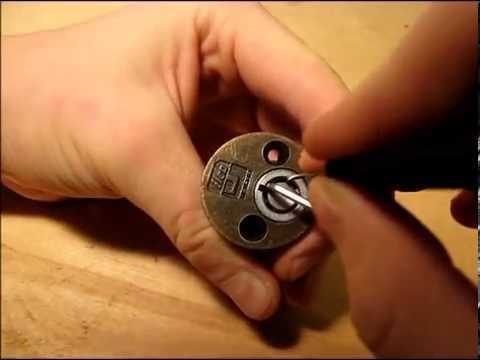
Next, you need to prepare the work area where you will be performing the drilling process. Clear the area of any clutter and make sure you have enough space to maneuver the drill. It is also important to lay down a protective covering to catch any debris or metal shavings that may be produced during the drilling process.
Secure the Lock
Before you start drilling, it is crucial to securely fasten the lock in place. This ensures that the lock remains stable and does not move while you are drilling. You can use clamps or vice grips to secure the lock onto a stable surface. Make sure the lock is positioned in a way that allows you easy access to the keyway.
Select the Proper Drill Bit
The choice of drill bit is important when drilling out a tubular lock. You should select a drill bit that matches the size of the lock pins. It is recommended to start with a smaller drill bit and gradually increase the size until the pins of the lock are successfully drilled out. This prevents damage to the lock and improves the overall drilling process.
Begin the Drilling Process
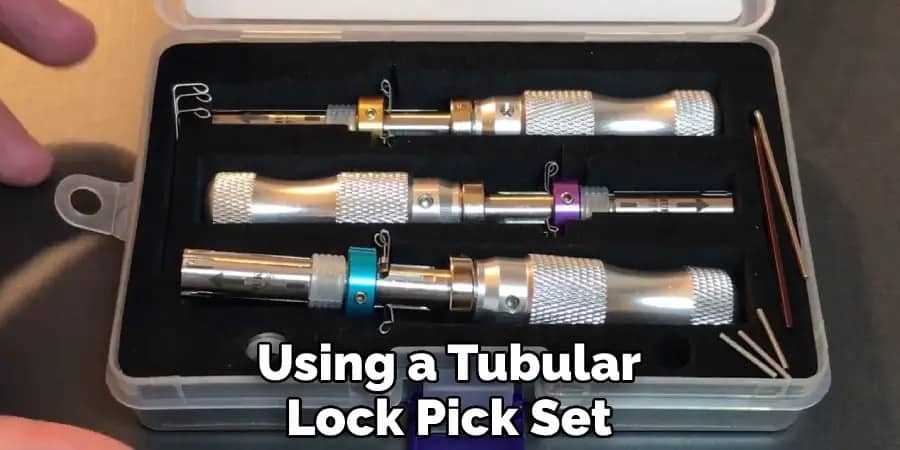
Once everything is in place and you have selected the proper drill bit, you can begin the drilling process. Start drilling at a slow speed and gradually increase the speed as you progress. Apply steady pressure and keep the drill bit aligned with the keyway to avoid any damage to the lock or the drill bit.
Remove Drilled Pins and Shavings
As you drill, you will notice that the lock pins and metal shavings accumulate in the keyway. It is important to periodically stop and remove the drilled pins and shavings to prevent them from interfering with the drilling process. You can use a pin extractor tool or a small brush to remove the debris from the keyway.
Continue Drilling Until the Lock Opens
Continue drilling until the lock opens or becomes loose enough to be easily removed. Take breaks as needed to allow the drill and the lock to cool down. This prevents overheating and prolongs the life of your drill bit. Keep drilling until the lock is fully drilled out and can be removed from its position.
Clean Up the Work Area
Once the lock is successfully drilled out, it is important to clean up the work area. Remove any debris, metal shavings, and protective coverings. Properly dispose of any hazardous materials and store your tools and equipment in a safe place.
Following these steps will help you successfully perform the drilling process when drilling out a tubular lock. Remember to exercise caution and work slowly to avoid any damage to the lock or injury to yourself. It is also recommended to practice on an old or spare lock before attempting to drill out a tubular lock in a real-life scenario.
Troubleshooting and Overcoming Challenges
1. Stuck or Jammed Lock
If you encounter a lock that is stuck or jammed, it is important to assess the situation before proceeding. Try to determine the cause of the issue by examining the lock mechanism and identifying any obstructions, debris, or damaged parts. Use a lubricant such as WD-40 or graphite powder to loosen any stuck components. If the lock is still not functioning properly, you may need to disassemble it for further inspection or consider replacing it with a new one.
2. Broken Drill Bits
When drilling out a tubular lock, it is common for drill bits to break, especially if the lock is made of hardened steel. To prevent this issue, use high-quality, durable drill bits that are specifically designed for locksmithing tasks. Ensure that the drill bit is properly aligned and securely fastened in the drill chuck. Apply steady but controlled pressure while drilling, and periodically check the condition of the bit to identify any signs of wear or damage. If a bit breaks during the drilling process, carefully remove any remaining fragments before continuing.
3. Lack of Visibility
Working on a tubular lock can be challenging due to the limited visibility inside the lock mechanism. To overcome this issue, use a flashlight or other suitable light source to illuminate the lock while drilling. This will help you better see the pins and other components, allowing for more precise drilling. Additionally, consider using magnifying glasses or other visual aids to enhance visibility and improve the accuracy of your work.
4. Difficulty in Removing Drill Shavings
During the drilling process, metal shavings can accumulate inside the tubular lock, obstructing the movement of the pins and potentially causing damage. To remove these shavings, use compressed air or a small brush to blow or brush them out of the lock. Be cautious not to blow or brush the shavings deeper into the lock, as this can worsen the situation. It is also important to clean the lock thoroughly before reassembling it to ensure optimal performance.
5. Damaging the Lock Cylinder
When drilling out a tubular lock, there is a risk of damaging the lock cylinder, especially if excessive force or incorrect drilling techniques are used. To minimize this risk, start with a smaller drill bit and gradually increase the size until the desired result is achieved. Apply steady pressure and avoid excessive force that could cause the drill bit to veer off course. Take breaks if necessary to prevent overheating of the drill bit or lock cylinder. If you encounter difficulties or are unsure of the proper drilling technique, consider seeking professional assistance.
6. Replacing the Lock
In some cases, troubleshooting and drilling out a tubular lock may not be the most effective solution. If the lock is severely damaged or unresponsive to drilling, it may be necessary to replace the lock entirely. Select a new lock that meets your security needs and specifications, and ensure that it is compatible with the door or other object where it will be installed. Properly install and test the new lock to ensure smooth operation and enhance the security of the area.
Securing the Lock and Testing Its Functionality
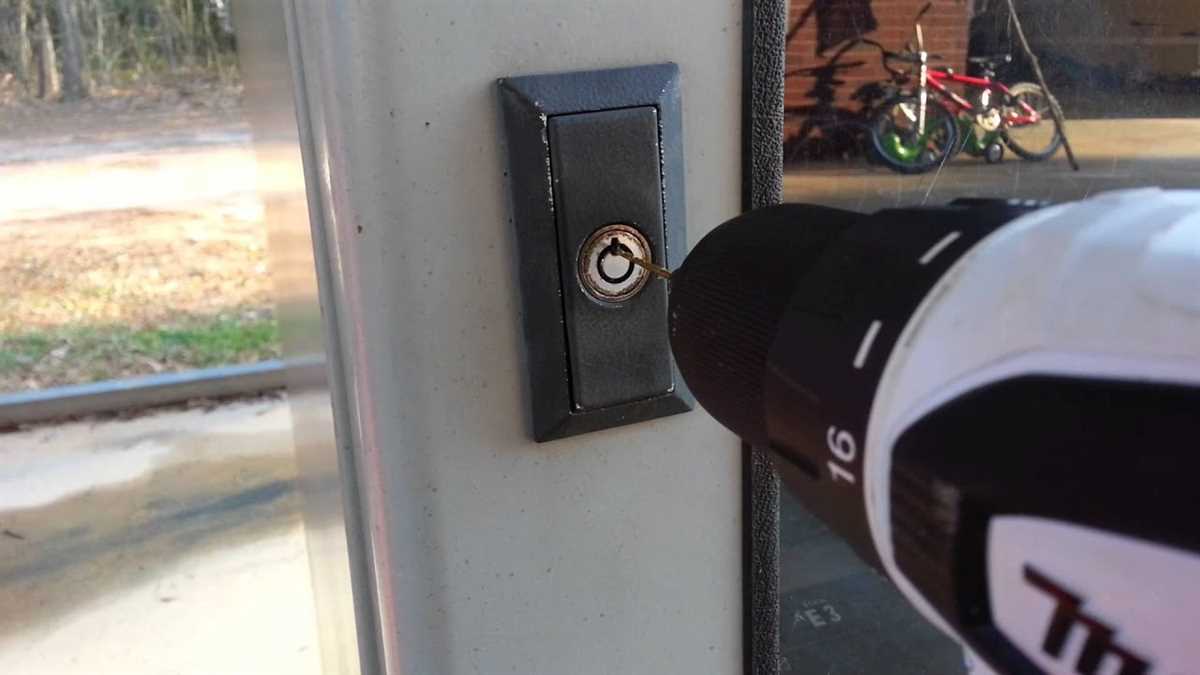
Before attempting to drill out a tubular lock, it is important to properly secure the lock mechanism to prevent any damage or unwanted movement. Additionally, testing the functionality of the lock beforehand will help ensure a successful drilling process.
Securing the Lock
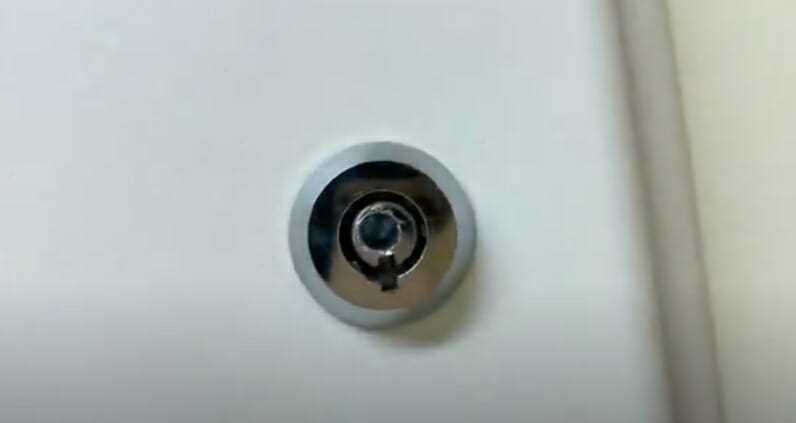
To secure the lock, follow these steps:
- Ensure the lock is in a stable position, either by securing it to a workbench or using clamps to hold it in place.
- Make sure the lock is fully engaged and aligned properly.
- Double-check that the keyway is parallel to the drill axis to ensure the drill bit penetration is accurate.
- Use tape or a rubber band to secure the plug follower to the lock to prevent accidental plug movement.
Testing Functionality
Before proceeding with drilling, it is essential to test the lock’s functionality to determine if it is necessary to drill it out. Here’s how to test the lock:
- Insert the original or spare key into the lock carefully.
- Turn the key clockwise and counterclockwise to ensure the lock smoothly operates and does not stick.
- If the lock is sticky or not functioning correctly, consider seeking professional assistance or attempting other non-destructive means of opening.
- If the lock functions as expected, proceed with the drilling process.
By securing the lock properly and testing its functionality, you can ensure a smoother drilling process and minimize the risk of damage or complications during the procedure.
FAQ:
What is a tubular lock?
A tubular lock is a type of lock that uses a round key to operate. It contains a series of pins, which must be aligned in order to unlock the lock.
Why would someone need to drill out a tubular lock?
There are several reasons why someone might need to drill out a tubular lock. One reason is if they have lost the key and need to gain access to whatever is locked. Another reason is if the lock is damaged or broken and needs to be replaced.
What tools are needed to drill out a tubular lock?
Drilling out a tubular lock requires a few specific tools. These include a drill with various drill bits, a drill guide, lubricant, a screwdriver, and pliers.
Are there any risks involved in drilling out a tubular lock?
Yes, there are risks involved in drilling out a tubular lock. One risk is damaging the lock beyond repair, which may require replacing the entire lock. Another risk is injuring yourself if the drill slips or if the lock suddenly opens while drilling.
Can drilling out a tubular lock be done by someone without any locksmith experience?
Drilling out a tubular lock can be done by someone without any locksmith experience, but it is not recommended. It requires precision and knowledge of the lock mechanism, which a professional locksmith would have. Inexperienced individuals may cause further damage or not be able to successfully unlock the lock.
Are there any alternatives to drilling out a tubular lock?
Yes, there are alternatives to drilling out a tubular lock. One option is to try picking the lock using a tubular lock pick, which is a specialized tool. Another option is to try using a bypass tool to manipulate the lock without drilling.
Video:









